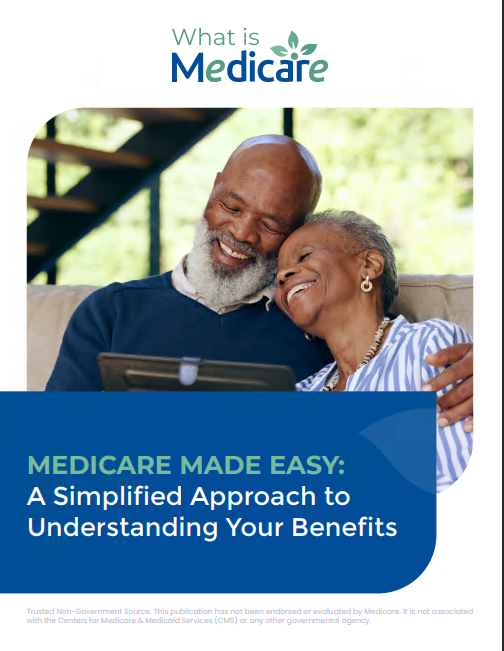Key Takeaways
-
Medicare has four main parts: A, B, C, and D. Each serves a distinct role in covering your healthcare needs.
-
Understanding the differences and costs associated with each part is crucial before selecting the right plan for your situation.
Getting to Know Medicare Parts A, B, C, and D
When you’re approaching Medicare eligibility, all the terminology and options can feel overwhelming. But breaking it down makes it much easier to understand. Medicare is designed to provide healthcare coverage for people aged 65 and older and certain younger individuals with disabilities or chronic conditions. To make the best choice, you need to understand the four main parts—A, B, C, and D—and how they fit together.
Medicare Part A: Hospital Insurance
Part A is often called hospital insurance because it covers inpatient care in hospitals, skilled nursing facilities, hospice care, and some home health services. If you or your spouse paid Medicare taxes for at least ten years, you likely won’t pay a monthly premium for Part A. This makes it an essential foundation of your healthcare coverage under Medicare.
What It Covers:
-
Hospital stays (including a semi-private room, meals, and necessary tests)
-
Skilled nursing facility care (short-term rehabilitation after hospitalization)
-
Hospice care for terminal illnesses
-
Limited home health care
Key Costs:
-
In 2025, the inpatient deductible is $1,676 per benefit period.
-
Daily coinsurance applies after 60 days in a hospital or 20 days in a skilled nursing facility.
Part A coverage is automatic if you’re already receiving Social Security benefits when you turn 65. Otherwise, you’ll need to sign up during your Initial Enrollment Period.
Medicare Part B: Medical Insurance
Part B covers outpatient care, such as doctor visits, preventive services, lab tests, and medical supplies. Unlike Part A, you’ll pay a monthly premium for Part B. Most people opt into this coverage because it helps cover a significant portion of routine medical expenses.
What It Covers:
-
Doctor’s appointments and specialist visits
-
Preventive screenings (e.g., mammograms, flu shots)
-
Diagnostic tests (e.g., MRIs, bloodwork)
-
Durable medical equipment (e.g., wheelchairs, walkers)
Key Costs:
-
The standard monthly premium is $185 in 2025.
-
The annual deductible is $257.
-
Once you meet your deductible, you’ll generally pay 20% of the Medicare-approved amount for most services.
Enrollment in Part B is optional, but delaying enrollment without other qualifying coverage can result in lifelong late enrollment penalties.
Medicare Part C: Medicare Advantage Plans
Part C, or Medicare Advantage, is an alternative to Original Medicare (Parts A and B). These plans are offered by private insurers approved by Medicare. While they must provide at least the same level of coverage as Original Medicare, they often include additional benefits like dental, vision, or fitness programs.
What It Covers:
-
All services covered by Parts A and B
-
May include prescription drug coverage (Part D)
-
Supplemental benefits such as routine vision or dental care
Key Considerations:
-
Medicare Advantage plans often have networks of providers, so you may need to stay in-network for lower costs.
-
These plans set an annual out-of-pocket limit for medical expenses, which can provide financial protection.
Medicare Part D: Prescription Drug Coverage
Part D helps cover the cost of prescription drugs. It is essential for managing the cost of medications, especially for those with ongoing prescriptions. Like Part C, Part D plans are offered by private insurers approved by Medicare.
What It Covers:
-
Prescription medications, including generics and brand-name drugs
-
Tiers of drugs with varying copayments or coinsurance
Key Costs:
-
The annual deductible for 2025 is $590.
-
A new $2,000 out-of-pocket cap is in place for prescription drugs, providing financial relief for enrollees.
Even if you don’t currently take medications, enrolling in Part D when first eligible can help you avoid late enrollment penalties down the road.
Coordinating Medicare Parts for Comprehensive Coverage
Each part of Medicare works independently, but they often overlap to provide comprehensive healthcare coverage. For example:
-
Part A and Part B together form Original Medicare, covering most inpatient and outpatient services.
-
Adding Part D ensures that your medication costs are managed.
-
Opting for Part C may bundle all these benefits into a single plan with additional perks.
Enrollment Periods to Keep in Mind
Medicare has specific enrollment periods to help you join or make changes to your coverage:
-
Initial Enrollment Period (IEP): A 7-month window starting 3 months before you turn 65, including your birthday month and the 3 months after.
-
Annual Enrollment Period (AEP): October 15 to December 7 each year. You can switch plans or join a Part D plan during this time.
-
Special Enrollment Periods (SEP): Triggered by qualifying life events, like losing employer coverage or moving to a new area.
Failing to enroll on time can result in late penalties, especially for Part B and Part D.
Costs and Budgeting for Medicare
Understanding the costs associated with each part of Medicare is essential for budgeting:
-
Part A: Free for most, with out-of-pocket costs for hospital stays.
-
Part B: Monthly premium, deductible, and coinsurance.
-
Part C: Costs vary by plan, but they have an annual out-of-pocket limit.
-
Part D: Premiums, deductibles, and copayments vary, but the new out-of-pocket cap helps manage costs.
If you’re on a limited budget, you might qualify for programs that assist with Medicare costs, such as Medicaid or the Medicare Savings Program.
Making the Right Choice for Your Needs
When deciding on Medicare coverage, consider your health needs, budget, and preferences. Here’s how to approach it:
-
Assess your healthcare usage: Do you visit specialists often? Do you take multiple prescriptions?
-
Consider additional benefits: Would dental or vision coverage be helpful?
-
Check provider networks: If you choose Part C, ensure your preferred doctors are in-network.
Medicare’s official website and your local State Health Insurance Assistance Program (SHIP) are excellent resources for guidance.
Don’t Overlook the Importance of Review
Once you’ve chosen your plan, remember to review it annually. Plan costs and benefits can change, so staying informed ensures you’re always getting the coverage that best fits your needs. Use the Annual Notice of Change (ANOC) sent by your plan each fall to check for updates.
Understanding Your Options Matters Most
Medicare is a vital part of your healthcare as you age, but it’s not a one-size-fits-all solution. Taking the time to understand the differences between Parts A, B, C, and D will help you make an informed decision. Remember to evaluate your needs and seek help if you need assistance navigating your options.




